Before Silicon Valley got nasty, the Pirates of Analog Alley fought it out
Stealing ideas and fighting over patents existed back when computers had gears, too.
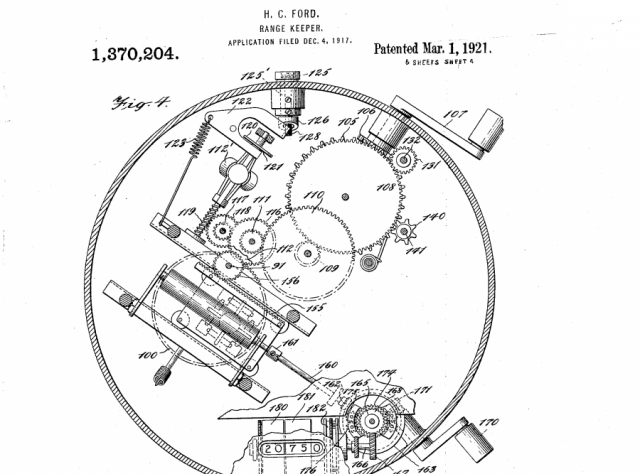
A patent drawing for the Range Keeper, Hannibal Ford's analog fire control computer.
The startup culture created by the electrification and communications booms of the late 19th and early 20th centuries produced a generation of engineers looking for the next big thing. But their similarities with today's tech leaders go beyond the fact that "a generation of engineers looking for the next big thing" could just as easily describe anyone at Google, Facebook, or maybe even SnapChat. While researching the recent Ars report on Naval analog computers, parallels immediately revealed themselves. The behavior of the men who pioneered this analog computing eerily mimics actions we're more familiar with from Steve Jobs, Bill Gates, Larry Page and Sergey Brin, and the rest of today’s tech pantheon. These early engineers were, if you’ll pardon the phrase, the Pirates of Analog Alley.
Absolute Zero
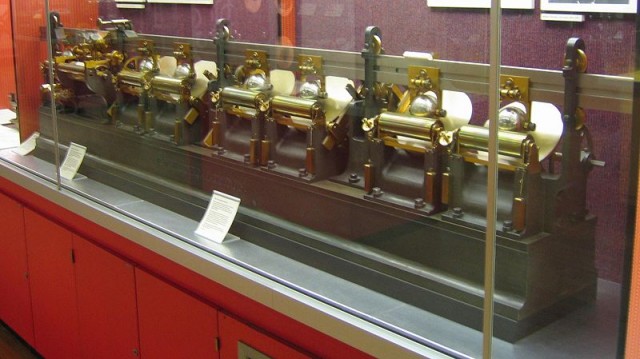
Enlarge / Lord Kelvin's "harmonic analyzer," with disk integrators.
This device would be the basis of Kelvin’s machine to calculate tide tables. Nearly 60 years later, the same principles would be used at MIT to create the first machine called a differential analyzer, which is used for calculating complex differential equations. The integrating engine would be in the back of Kelvin’s mind 15 years later when, as a board member for Linotype & Machinery Co. Ltd., he had a conversation with the company’s managing director, Arthur Pollen.
As recounted by his son Anthony Pollen in the book The Great Gunnery Scandal: The Mystery of Jutland, Pollen traveled to Malta in 1900, where he was invited aboard a Royal Navy ship to witness gunnery exercises. When he returned to England, he told Kelvin how horrifically inaccurate the ships' big guns were. In the course of the conversation, Lord Kelvin mentioned an analog computer he had worked on and how it could probably be used to do the ballistic calculations required to make the guns hit their targets.
Pollen took the idea and ran with it. With a singular passion rivaling Steve Jobs', Pollen spent the next eight years developing what he would call the Argo Aim Correction System. Its integrating core concept was passed from Kelvin's brother to Kelvin and now finally to Pollen.
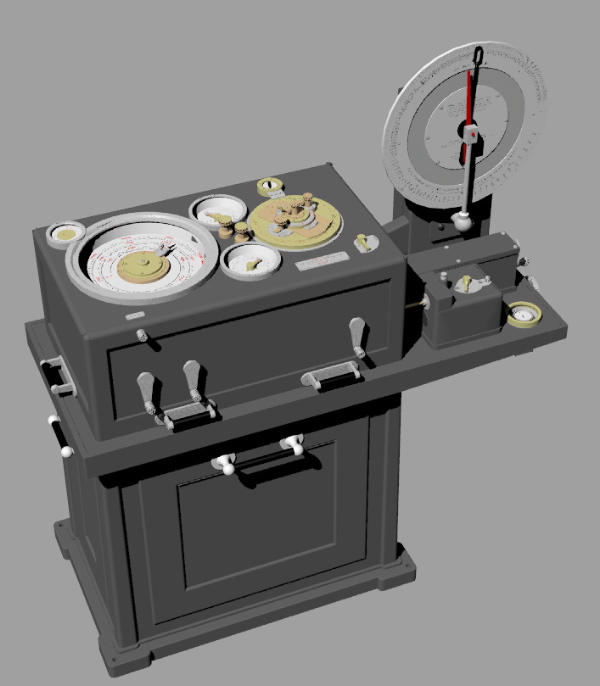
A 3D model of the Argo Clock, the heart of Arthur Pollen's fire control system.
One of the Argo system’s major innovations was its use of gyroscopes, both for calculating directional information and as a “stable vertical," sensing the ship’s pitch and yaw and adding that to the calculations. Pollen spent a great deal of development effort on his own gyroscope systems—based on early torpedo stabilizer systems—to create the stabilizing element that handled movement in the vertical plane. But unfortunately for Pollen, he became a groundbreaker in computing in another way—having his operating system ripped off.
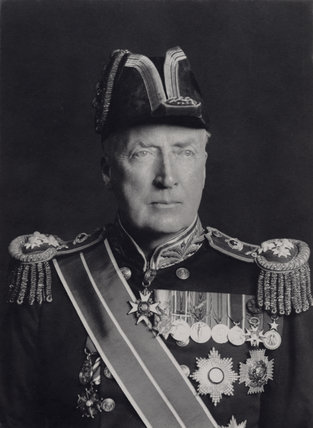
Sir Frederic Charles Dreyer recognized the best parts of Pollen's Argo system and copied them off for his own.
Originally, according to Norman Friedman's book Naval Firepower, Dreyer saw his system as something for individual turrets to help them stay on target—essentially an add-on to the Argo system. But the more time he spent with Pollen, the more he started to believe his system could be competitive with it. He took his design to his own personal Paul Allen-like figure: Keith Elphinstone, the chief designer and director at the naval instrument manufacturer Elliot Brothers. The two worked in the Argo's system of automatically transmitting bearing and range data from a stabilized rangefinder.
As much as the Dreyer Table borrowed from the Argo, it was also less integrated than Pollen’s system and more open to tinkering and hacking, since it was essentially a bunch of hardware bolted onto an open metal table. It was the Windows PC to Pollen’s carefully crafted Macintosh-like concept for the Argo. Dreyer's creation also preserved a place for human skill, and it was the product of an insider—as opposed to that of some upstart entrepreneur.
Dreyer still worked for the DNO as the officer responsible for fire control systems. He was able to stack the deck some against Pollen—though Pollen did enough of that himself, according to John Brooks' account in the book Dreadnought Gunnery and the Battle of Jutland. Equipped with his own reality distortion field, Pollen claimed that his system was accurate "to 1/10 of one percent"—an accuracy that would have required the information from the spotting system to be transmitted and turned into gun orders in milliseconds. Pollen was slow in delivering and combative in negotiations on price, plus much of his early hardware was, to put it kindly, idiosyncratic. For example, there was one feature of the Argo Clock that wasn't borrowed by the Dreyer Table: the Argo system couldn't automatically track a target while the ship it was on was turning.
So while Pollen sold a number of his full systems for installation on Russian warships and sold parts of systems to the Royal Navy, Dreyer’s hack of Pollen’s system became the standard for the British fleet just before the start of World War I. And as it became more and more apparent how badly he had been screwed by Dreyer, the tenor of Pollen’s relationship with the Navy soured. He was denied a special relationship with the Navy and was relegated to the same treatment as other inventors. Pollen's passion, pushiness, and eventual rage saw to it that he was eventually pulled from the approved contractor list all together. It led to a patent dispute that would be the gunnery equivalent of Apple vs. Microsoft.
The wizards of Brooklyn
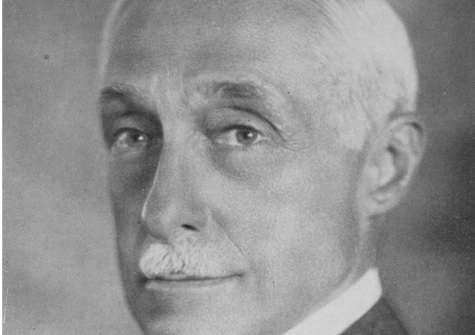
Elmer Ambrose Sperry.
National Academy of Science
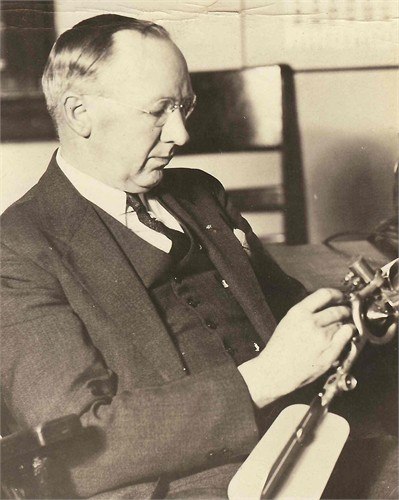
Hannibal Ford, in an undated photo.
Ford took point with the Navy, working to install a gyro system aboard the dreadnaught USS Delaware in 1911. That trial was a huge success, and soon Sperry got pulled in deeper by the Navy as they realized the potential of the gyrocompass for gunnery. Sperry Gyroscope delivered its first fire control “clock” in 1912, and the Navy couldn’t get enough of it. Brooklyn soon became the analog computing equivalent of Silicon Valley, with its concentration of engineers and machinists, and most of the new startups were launched by engineers who got their start with Sperry.
In 1915, Ford set out to use the relationships and knowledge he built up with the Navy under Sperry and launched what would become Ford Instrument Company—the company that would, in his time, reach the pinnacle of analog computing. His first sale to the Navy was an add-on to the Sperry “clock” system: an improved “target bearing and range finding periscope” for gunners. The periscope used optics and a gyrocompass to pinpoint an enemy’s direction and position and then transmit it back to the Sperry computer. But Ford soon followed with an improved fire control computer called the Range-Keeper (which became known in the fleet as the “Baby Ford”). And like his partner Sperry, Ford's system would benefit from Pollen, specifically Pollen's Argo patents licensed by the Navy.
Tables turned at Jutland
The US Navy’s acquisition of the Argo patents may have been some consolation to Pollen, but his bitterness about the Royal Navy’s shafting of Argo would only grow stronger in June of 1916 by the Battle of Jutland. The only major fleet action involving battleships in World War I, Jutland was a strategic victory for the British—but tactically, it went horribly awry. A good deal of that was because of poor gunnery—gunnery directed by the Dreyer Table. While the Jellicoe-commanded British Grand Fleet eliminated the German fleet as a strategic threat, the British lost 14 ships and more than 6,000 sailors. The Germans only lost nine ships and 2,500 men.Germany was able to use the battle as a propaganda victory, even though its surface fleet spent most of the remaining war in port. Pollen became the Great War's equivalent of a war blogger, gaining a position as a naval correspondent for the Westminster Gazette and the weekly journal Land and Water, the First World War’s closest equivalent to War is Boring (though it had more of a Fox News flair for sensation and occasionally pumped up enemy casualty figures to make better copy). While Pollen initially wrote a piece that colored Jutland as a strategic victory instead of an utter disaster, he later wrote a book that excoriated Jellicoe and laid credit for anything good that came out of Jutland to Admiral David Beatty, who commanded a battlecruiser squadron in the action and succeeded Jellicoe as fleet commander.
But Beatty’s gunnery was the worst of the lot, and he lost two battlecruisers because of his preferred style of running in close and firing fast. Meanwhile, the Germans were scoring hits at extreme range. Beatty famously said, “There seems to be something wrong with our bloody ships today.” Some (specifically Pollen’s son Anthony, who wrote a book on the topic) argue that the bargain-basement nature of the Dreyer Table was responsible for the Royal Navy’s shortcomings, though poor training on the systems (which took a roomful of people to operate) and tactics certainly played a role.
But in the final analysis, as Brooks and Friedman concluded, it came down to operator error. The Dreyer Table was far beyond what the Germans had, and it gave the few ships it was deployed upon an edge in battle—allowing the ships with big guns to score a greater number of hits at range than the Germans.
In 1918, the Royal Navy formed a committee to take a look at how to improve the Dreyer Table. Because of the open nature of the system, it proved relatively easy throughout the war to improve on it and plug in new components (such as the Sperry gyroscope). It was one of the first demonstrations of the benefit of an open architecture, and the lessons were applied to the Admiralty Fire Control systems that would be used by the Royal Navy through World War II.
After the war, Pollen would get some vindication, at least financially. In 1926, a Royal Commission found that the Dreyer Table was, in fact, based on Pollen’s invention, and Pollen was paid £30,000 (worth roughly $1.3 million in current US dollars) in compensation by the Royal Navy. The pay-day was based on how much Pollen would have made equipping the entire fleet, including ships that were never completed.
The end of the cam
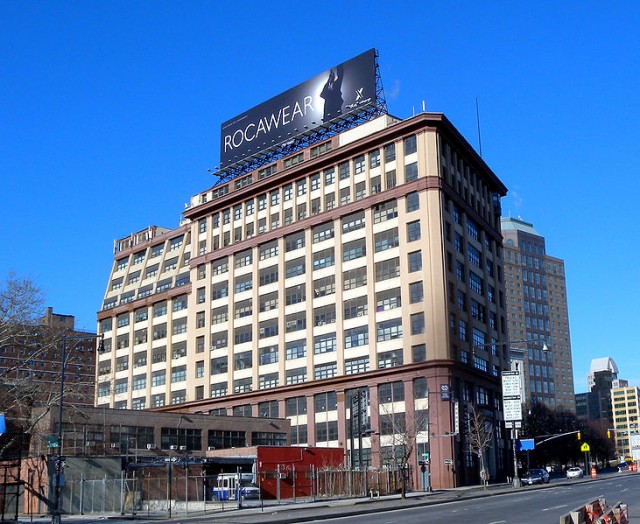
Enlarge /
Sperry Gyroscope Company headquarters at 40 Flatbush Avenue Extension,
Brooklyn. At one point, the Sperry offices were a temporary site for the
UN.
Hannibal Ford retired from the engineering bench shortly after his Range Keeper Mark 8 firing system was completed and moved to the executive suite. He returned to the nest, after a fashion, when his company was acquired by Sperry Corporation shortly after its spinoff.
And the father of the business, Lord Kelvin? He became the president of one of the first technology standards bodies—the International Electrotechnical Commission. He died in 1907, never seeing what Pollen and the others would make of his contribution to computing. But he already had that whole thermodynamics thing going for him.
As for the devices these men wrought, the demands of World War II sent mechanical analog computers off to a much less glamorous side-gig. Full electric analog systems were developed when it appeared Ford Instrument wouldn’t be able to keep up with the war's demand. Cheaper and lighter, the electrical systems based on the same principles as mechanical computers started to take over during the 1950s, only to be replaced themselves by digital systems starting in the 1970s. Sperry would become part of the digital revolution when the company merged with the former typewriter company Remington-Rand in 1955 and created the Univac. But that’s a whole other chapter in the history of technological contention and backstabbing.
No comments:
Post a Comment